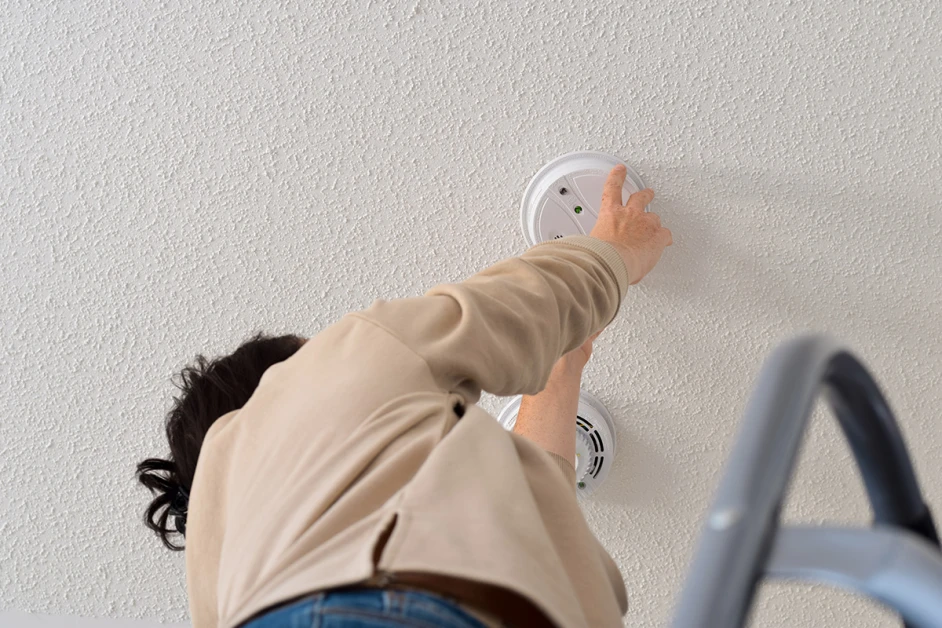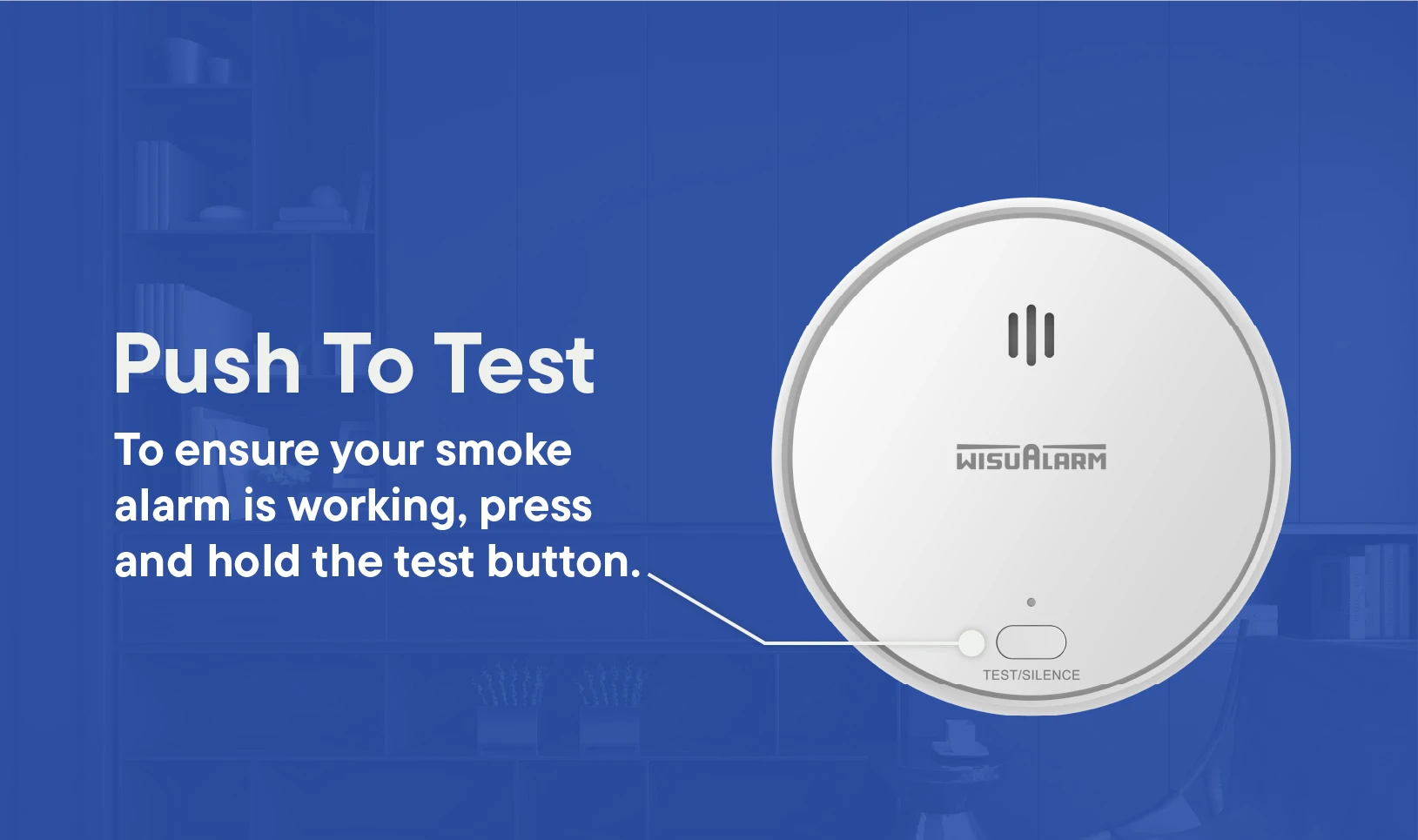
Need assistance?
Need Assistance? Call Us 0330 058 0630
Did You Know? We Sell Fire Alarm Systems as Complete Kits. Shop Now
25/04/2025 • by Alice P

Fire safety in domestic settings is more than just good practice. Whether you are a homeowner, landlord, electrician or fire safety professional, understanding the regulations that govern domestic fire alarms is essential.
One of the most important aspects is the grading system set out in BS 5839-6:2019, with classifications such as D1, D2, and F1, which determine the type of system and power supply suitable for different properties.
This guide breaks down what these grades mean, how they apply in everyday situations, and how you can ensure your property meets the current standards for fire protection.
Fire safety compliance means more than just ticking boxes; it’s about protecting people and property from real risks.
In the UK, domestic fire alarm systems must meet the recommendations of BS 5839-6:2019. This standard outlines system requirements based on the type of building, occupants, and risk level.
It breaks systems down into:
Grades – Indicate how the system is powered and controlled
Categories – Define where detectors are located and what areas are protected

Each Grade represents a different level of system robustness, based on power supply and interconnectivity:
Grade | Description | Typical Application |
Grade A | Full fire alarm system with separate control and indicating equipment, fire detectors, sounders, and backup power | Houses in multiple occupation (HMOs) or high-risk dwellings |
Grade C | Detectors and alarms connected to a common power supply, with control and monitoring functions | Higher-risk single-family homes or shared dwellings |
Grade D1 | Mains powered alarms with a sealed, tamper-proof backup battery | Standard for most UK new builds under the current building regs |
Grade D2 | Mains powered alarms with user-replaceable backup batteries | Lower-risk domestic settings or older homes being upgraded |
Grade F1 | Battery powered alarms with a sealed, tamper-proof battery (typically 10 years) | Suitable for low-risk properties, or where mains wiring is not feasible |
Grade F2 | Battery powered alarms with user-replaceable batteries | Budget solution or temporary accommodation |
While grades indicate how fire alarm systems are powered and configured, categories specify where detectors should be placed and the areas that need protection. The categories in BS 5839-6 are:
LD1: The highest level of protection, requiring detectors in every room where a fire could start, including bedrooms, hallways, and living areas.
LD2: A lower level of protection, with detectors placed in circulation spaces such as hallways and landings.
LD3: Provides protection only in hallways or other areas that act as escape routes. This category is often used for properties where the fire risk is minimal.
Key Differences Between LD1, LD2, and LD3:
LD1: Provides comprehensive protection by covering all rooms in the home. This category is often required in high-risk homes, such as those with vulnerable residents.
LD2: Focuses on the most crucial areas, such as hallways and landings. It’s suitable for properties where fire risks are less severe but still require reliable coverage.
LD3: Only provides basic coverage in escape routes and is often used in lower-risk situations.
Key Differences Between D1 and D2
D1: Offers longer-term reliability with no battery replacements required. Preferred for new builds and where access is difficult (e.g. elderly residents).
D2: More cost-effective, but requires periodic battery replacement and carries a slightly higher risk of user error or neglect.

Homeowners
For new builds or major refurbishments, D1 is generally the minimum standard required.
Older homes being retrofitted may be fitted with D2 alarms to upgrade compliance cost-effectively.
F1 and F2 are often used in temporary or portable dwellings, like static caravans, or in heritage properties where wiring may be an issue.
Safety Professionals & Installers
Conduct a fire risk assessment to determine the appropriate Grade.
Consider the occupants (e.g. vulnerable individuals may require systems with reduced maintenance like D1 or F1).
Ensure alarms are interlinked (wired or wireless) where required—especially in LD1 and LD2 systems.
Location: Install smoke alarms in all circulation spaces (LD2) or all risk rooms (LD1). Heat alarms should be used in kitchens.
Mounting: Ceiling-mounted, away from light fittings and walls.
Commissioning: Always test each alarm and the interlinking system upon installation.
Documentation: Provide the user with clear maintenance instructions, system layout, and test records.

Regular Testing
Test alarms monthly using the built-in test button.
Annually: Clean detectors and inspect for damage or wear.
For D1 and F1 systems, although batteries are sealed, the entire unit should be replaced when it expires (usually after 10 years).
Stay Updated with Regulations

Choosing the right fire alarm system grade, whether D1, D2, or F1, is about more than just meeting regulations. It’s about ensuring reliable, long-term protection for everyone in the home.
As standards evolve, so should your approach to domestic fire safety. By understanding these grades and their applications, you can make informed decisions and ensure full compliance with the latest fire safety regulations.
For more information on choosing the right system for your home, contact our team at [email protected] or call 0330 058 0630.
15/02/2021 • by Lynsey B